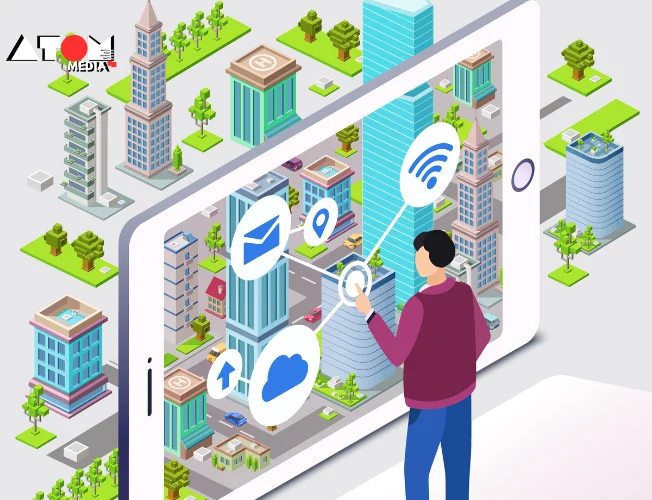Navigating India’s bustling metro cities is no easy feat. Every day, millions of commuters rely on an intricate web of transportation options, from buses and metros to cabs and auto-rickshaws. However, the lack of integration between these modes creates confusion, frustration, and higher commuting costs, highlighting the need for more efficient urban mobility solutions. Enter Mobility-as-a-Service (MaaS) platforms, designed to simplify commuting and enhance the overall commuter experience by integrating various transport services into a seamless system.
Addressing Connectivity Challenges: First and Last-Mile Solutions
One of the biggest challenges urban commuters face is the infamous “first and last-mile connectivity.” This refers to the distance between public transport hubs, such as metro stations, and the commuter’s final destination. In India’s urban landscape, this distance can vary significantly, from as little as 500 meters to several kilometers, depending on the location. The lack of efficient solutions for this portion of the journey often leaves commuters frustrated, adding to their daily struggle.
For MaaS platforms to succeed, they must address these connectivity gaps with flexible, location-specific solutions. For instance, a MaaS platform should be able to offer suggestions for the best transport options, whether it’s a short walk, a bicycle ride, or a shared auto service, depending on the commuter’s needs. Tailoring the solution to the specific challenges of first and last-mile connectivity is critical in making the system more user-centric and efficient.
Designing User-Centric Mobility Solutions
At the heart of MaaS platforms lies the goal of creating a user-friendly system that balances innovation with familiarity. While new technologies and features can greatly enhance the commuting experience, drastic changes can overwhelm users accustomed to traditional transport modes. Therefore, effective MaaS platforms must consider commuter habits and preferences when introducing new features.
A well-designed MaaS platform should provide an intuitive interface that offers commuters a clear overview of available transport options. Whether it’s offering suggestions for undecided users or providing detailed information for those with specific preferences, the platform should ensure seamless integration across multiple transport modes. Additionally, it must be flexible enough to adapt to diverse commuter needs, gathering feedback and analyzing usage patterns to improve over time.
Collaboration: The Key to Successful MaaS Implementation
One of the cornerstones of MaaS platforms is collaboration between various stakeholders, including government transport bodies, private operators, and local service providers. Without cooperation, the dream of creating a unified mobility system would remain out of reach. For example, MaaS platforms must coordinate with bus services, metro systems, ride-hailing apps, and even bicycle-sharing services to provide a cohesive experience for users.
Government agencies play a pivotal role in providing the regulatory framework and infrastructure needed to support MaaS platforms. This includes investing in digital infrastructure and creating policies to govern data sharing, privacy, and security. Private transport operators, such as taxi services and ride-hailing platforms, also need to collaborate by sharing their data with MaaS providers to enable real-time updates and seamless integration between different transport modes.
Additionally, MaaS platforms can benefit from the involvement of local communities and stakeholders who provide insights into commuter behavior and preferences. Engaging the public is crucial for the adoption of MaaS platforms, as educating commuters about the benefits—such as reduced travel times, lower costs, and improved convenience—can drive widespread acceptance.
Leveraging Cutting-Edge Technologies for Urban Mobility
MaaS platforms are set to revolutionize urban mobility in India by harnessing advanced technologies such as artificial intelligence (AI), the Internet of Things (IoT), and data analytics. These technologies will enable real-time data analysis, predictive maintenance, and smart traffic management, making commuting faster, safer, and more convenient for millions of people.
For instance, AI and machine learning models can analyze commuting patterns and predict peak travel times, allowing MaaS platforms to make real-time adjustments that improve efficiency. IoT-enabled devices can monitor traffic conditions and provide real-time updates, while cloud computing ensures seamless data sharing across multiple transport operators.
These technologies are also instrumental in addressing the diverse needs of India’s urban commuters. MaaS platforms can leverage AI to offer personalized transport suggestions based on a commuter’s preferences, such as affordability, speed, or convenience. By consolidating multiple transport options into a single platform, MaaS provides a more streamlined commuting experience, reducing the need for multiple apps and systems.
Overcoming Challenges in MaaS Implementation
While the potential benefits of MaaS platforms are immense, several challenges must be addressed for successful implementation:
- Infrastructure Limitations: Many Indian cities still lack the digital and physical infrastructure needed to support MaaS platforms. Upgrading existing infrastructure is essential to ensure that MaaS can function effectively.
- Regulatory Frameworks: Policymakers must create robust regulations governing data sharing, privacy, and security. A transparent legal framework is vital to ensure the protection of user data and to foster collaboration between private operators and government bodies.
- Cybersecurity Concerns: With large amounts of data being exchanged between users, transport operators, and service providers, ensuring data security is a major concern. Cybersecurity measures must be in place to protect user data from breaches and unauthorized access.
- Affordability and Accessibility: For MaaS platforms to be truly effective, they must cater to a wide range of commuter needs. This includes offering affordable pricing options and providing information in multiple languages to ensure inclusivity across India’s diverse population.
The Future of Urban Mobility in India
The rise of MaaS platforms promises to transform urban commuting in India, making it more efficient, convenient, and environmentally sustainable. By consolidating multiple transport options into a single platform, commuters will benefit from reduced travel times, lower costs, and a simplified commuting experience.
Furthermore, cities will enjoy decreased traffic congestion, improved air quality, and enhanced economic productivity as a result of more efficient transport systems. As India continues to urbanize, the importance of streamlining urban mobility will only grow.
Read more: Marketing News, Advertising News, PR and Finance News, Digital News





